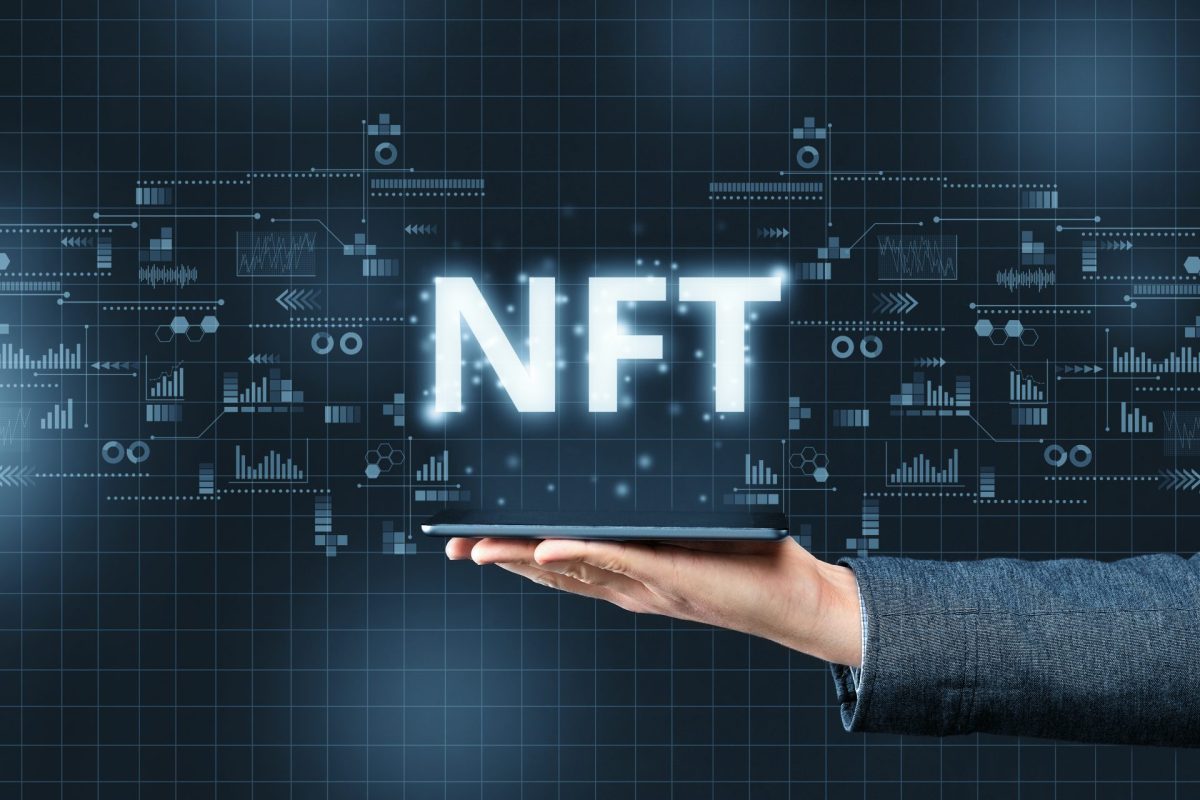Navigating the Landscape of NFT Investment Risk and Return

The world of digital assets has opened up new avenues for creativity and ownership, attracting attention from various sectors of society. This innovative space presents both exciting possibilities and potential challenges, prompting individuals to analyze their positions carefully. As enthusiasts and collectors engage with these unique creations, understanding their dynamics becomes crucial.
Amidst the allure of vibrant communities and transformative technologies lies a complex framework that requires thorough examination. Investors must delve into the intricacies of this evolution, weighing both the potential opportunities and the unforeseen pitfalls that may arise along the journey. Grasping the fundamental aspects of this marketplace can lead to informed decisions and refined strategies.
By fostering a deeper comprehension of the traits and mechanisms driving this sector, participants can better align their objectives with their actions. A mindful approach to collecting and trading can significantly enhance one’s experience, establishing a foundation for balanced participation in this ever-changing digital realm. With insightful perspectives, individuals may confidently engage with this captivating landscape and seek rewarding experiences.
Understanding the NFT Market Landscape
The realm of digital collectibles and unique assets has evolved into a complex environment that attracts various participants. This vibrant domain comprises creators, collectors, and traders, each playing a significant role in shaping its dynamics. A comprehensive grasp of this terrain is essential for anyone looking to engage meaningfully in it.

Key Elements of the Market
- Digital Ownership: The core concept revolves around the notion of true ownership of digital files, verified through blockchain technology.
- Platforms: Numerous venues facilitate the creation and exchange of these assets, each with unique features and community cultures.
- Creators: Artists, musicians, and various content creators are leveraging this sphere to monetize their work directly, breaking free from traditional gatekeepers.
- Collectors: Individuals and institutions alike are acquiring these unique items, often driven by personal interests or speculative motives.
Market Dynamics
- Volatility: The value of digital items can fluctuate significantly, influenced by trends, cultural phenomena, and market demand.
- Community Influence: Engaged communities can dramatically affect the popularity and perceived value of specific assets.
- Legal Considerations: Ownership rights and copyright issues are evolving, creating a need for prospective participants to stay informed about relevant regulations.
Familiarity with these core components can empower individuals to navigate the intricate landscape of digital collectibles more effectively, allowing for informed engagement regardless of their role in the ecosystem.
Analyzing Volatility in NFT Prices
The landscape of digital collectibles is marked by significant fluctuations that can perplex participants. Understanding these price movements is essential for those seeking to make informed decisions in this rapidly evolving market. Examining the factors that contribute to these changes can provide valuable insights into the underlying mechanisms of value in this unique ecosystem.
Causes of Price Fluctuations
Several elements play a role in the volatility of prices in this sector, including:
- Market Sentiment: Public perception can shift swiftly, influencing demand and hence pricing.
- Scarcity: Limited availability of certain items can lead to dramatic price increases.
- Trends and Fads: The popularity of specific themes or artists can spike interest temporarily, causing price surges.
- Technological Developments: Changes in underlying blockchain technology or platform updates can affect desirability.
Strategies for Mitigating Price Fluctuations
While volatility can be daunting, certain approaches can help manage the inherent unpredictability:
- Research: Conduct thorough investigations into potential purchases, considering historical price trends and activity levels.
- Diversification: Spread investments across various assets to balance potential losses.
- Long-Term Perspective: Maintain a focus on long-term value rather than attempting to time the market for short-term gains.
- Engagement with Community: Stay connected with fellow enthusiasts and experts to gain insights on market trends and sentiments.
By understanding the components driving price volatility, individuals can better position themselves in this dynamic space, enhancing their overall experience and potentially achieving favorable outcomes.
Key Factors Influencing NFT Value
The worth of digital assets is determined by a variety of elements. Understanding these components can significantly impact decision-making for those interested in this evolving market. Various factors interplay to shape the desirability and valuation of these unique items, influencing potential future profits or losses.
One of the primary drivers of value is rarity. Unique items or those produced in limited quantities often attract collectors and investors, leading to increased appreciation. Additionally, the creator’s reputation plays a crucial role; well-known artists or influencers can elevate the status of a digital asset, thereby enhancing its desirability.
Community engagement is another vital factor. A strong, active community can bolster the perceived value of a digital asset, as it fosters a sense of belonging and shared excitement among collectors. Furthermore, market trends and the overall economic environment can influence worth, as a growing interest in digital goods can lead to heightened demand.
Lastly, the utility of the asset can impact its appeal. If a digital item offers additional features, access to exclusive content, or real-world benefits, its value may increase. By keeping these critical elements in mind, individuals can make more informed choices in their pursuits within this dynamic landscape.

Risk Management Strategies for Investors
In the dynamic landscape of digital assets, adopting effective methods to safeguard one’s holdings is crucial. Investors must be proactive in understanding potential threats to their portfolios and implementing strategies that can mitigate these challenges. Developing a comprehensive approach to managing uncertainties can greatly enhance the likelihood of achieving favorable financial outcomes.
Diversification is one of the most fundamental tactics, allowing individuals to spread their capital across various digital collectibles or platforms. By not putting all resources into a single asset, investors reduce the chance of significant losses if one particular item underperforms.
Another essential technique is setting clear entry and exit points. Establishing predefined limits can help in maintaining discipline, ensuring that investors do not get swayed by market emotions. This involves determining in advance at which price levels one will buy or sell, based on thorough analysis rather than impulsive decisions.
Utilizing stop-loss orders can further enhance security. This tool automatically sells an asset when it reaches a certain price, limiting potential losses and protecting gains. It acts as a safeguard against unforeseen market downturns, providing peace of mind and facilitating a strategic approach to holding digital commodities.
Continuous learning is also paramount in this evolving sector. Staying updated on market trends, technological advancements, and regulatory changes can equip investors with the necessary knowledge to adapt their strategies effectively. Engaging with community forums and expert analyses ensures an informed perspective that can lead to better decision-making.
Lastly, fostering a long-term perspective can mitigate the impact of short-term volatility. Investors who focus on their overall goals rather than day-to-day price fluctuations may find themselves better positioned to endure market turbulence. A robust strategy that combines these elements can ultimately create a solid foundation for sustained prosperity in the digital asset arena.
Evaluating Long-Term vs. Short-Term Gains
When considering various approaches to profitability, understanding the distinctions between immediate rewards and sustained gains is crucial. Each strategy presents its own set of characteristics, advantages, and challenges, which can significantly impact the overall outcome of one’s financial endeavors. A thorough analysis of both perspectives will aid individuals in aligning their actions with their personal goals, risk tolerance, and market conditions.
Short-Term Strategies: Quick Rewards
Short-term strategies are primarily focused on achieving rapid profits within a limited timeframe. This approach can be appealing due to the potential for quick returns that can reinvigorate capital for further pursuits. However, the volatility of the market can lead to sudden fluctuations, making it essential for participants to stay informed and reactive. Engaging in this type of approach often requires constant vigilance and, at times, a willingness to embrace higher levels of uncertainty.
Long-Term Perspectives: Sustained Growth
Conversely, long-term perspectives advocate for a more patient methodology, emphasizing steady appreciation over time. Participants adhering to this approach typically believe that well-chosen assets will yield progressive increases in value, benefiting from factors like market maturity and broader adoption. While the wait can be arduous, this strategy tends to better withstand the turbulence of short-term market sentiment, ultimately fostering a sense of stability and predictability in returns.
Weighing both approaches involves recognizing personal preferences, market analysis, and the psychological preparedness to handle varying levels of pressure and expectation.
Future Trends in NFT Investments
The landscape of digital collectibles and assets is continuously evolving, presenting unique opportunities and challenges for participants. As technology advances and consumer behavior shifts, it’s essential to identify emerging patterns that could shape the market in the coming years. Understanding these trends can empower individuals to make informed choices and strategically position themselves within this dynamic environment.
Several key developments are anticipated to influence the sector profoundly. First, enhancements in blockchain technology will likely lead to greater scalability and lower transaction costs, making participation more accessible. Simultaneously, the integration of these assets into mainstream platforms could drive awareness and adoption among a wider audience.
| Trend | Description |
|---|---|
| Increased Utility | Collectors may seek assets offering functional benefits beyond mere ownership, such as access to exclusive events or services. |
| Sustainability | As awareness of environmental issues grows, there will be a demand for more eco-friendly solutions in the creation and trading of digital assets. |
| Community Engagement | Projects that foster strong communities through voting rights and collaborative initiatives are expected to gain traction. |
| Regulatory Developments | As authorities establish guidelines, clarity in the legal landscape could shape the frameworks within which digital assets operate. |
By staying abreast of these potential transformations, participants can better navigate the complexities ahead and harness emerging opportunities within this innovative realm.

Q&A: NFT Investment – Risks and Returns
What are the primary risks associated with investing in NFTs?
Investing in NFTs carries several risks that potential investors should be aware of. Firstly, the volatility of the NFT market can lead to significant price fluctuations, making it challenging to predict future values. Additionally, the lack of regulation in the space means that the market can be susceptible to fraud and scams. Another risk involves the potential for technological obsolescence; as technology evolves, certain platforms or types of NFTs might become outdated, leading to a decrease in their value. Lastly, NFT investments can be illiquid, meaning that it may be difficult to quickly sell your NFT at your desired price. Thus, investors must conduct thorough research and consider their risk tolerance before diving into the NFT market.
How can I assess the potential returns on my NFT investments?
Assessing the potential returns on NFT investments requires a multifaceted approach. Start by researching the project and its creators, as reputable artists and established platforms tend to have a better chance of generating higher returns. Analyze the rarity and uniqueness of the NFT; limited editions or one-of-a-kind pieces generally hold more value. Keep track of the market trends and recent sales in the NFT space to understand pricing dynamics. It’s also helpful to examine similar NFTs and their performance over time. Use these insights as part of a broader investment strategy, and remember that potential returns must be weighed against the inherent risks of NFT investments.
What strategies can I use to mitigate the risks of NFT investments?
To mitigate the risks associated with NFT investments, consider diversifying your portfolio across various NFTs and categories, such as art, music, virtual real estate, and collectibles. This approach can help balance losses in one segment with gains in another. Stay informed about market trends and community sentiment to make timely decisions. Engaging with reputable platforms and artists can reduce the risk of fraud, while also participating in NFT communities can provide valuable insights about upcoming trends. Furthermore, don’t invest more than you can afford to lose, and maintain a clear exit strategy to navigate market volatility effectively.
Are NFTs a good investment compared to traditional assets?
NFTs offer a unique investment opportunity that differs significantly from traditional assets like stocks or real estate. They represent digital ownership of unique items, making them appealing to collectors and digital art enthusiasts. The NFT market can provide high potential returns, particularly if you invest in popular or trending creators. However, it’s essential to recognize that the NFT market is relatively new and much more volatile than traditional markets. Additionally, while traditional assets often come with established valuation metrics and regulatory oversight, NFTs may lack these structures. Therefore, whether NFTs are a good investment depends on individual risk tolerance, expertise in the digital space, and interest in the underlying technology. It’s crucial for investors to conduct thorough research and consider their financial goals before choosing between NFTs and traditional investments.
What are the benefits of investing in non-fungible tokens?
Investing in non-fungible tokens offers the potential for higher returns than traditional financial assets, diversification of your investment portfolio, and ownership of unique digital assets like nft art, music, or collectibles. NFTs attach value to assets and allow buyers and sellers to move nfts around without intermediaries.
How can you avoid risks when buying or selling nfts?
To avoid risks when buying or selling nfts, ensure you use reputable nft marketplaces and verify that the seller owns the nft. Be cautious of fake nft stores, counterfeit nfts, and giveaways. Understanding the risks of nfts is crucial for secure transactions.
What makes the nft market highly volatile?
The nft market is highly volatile due to fluctuating demand, speculative investing, and the evolving nature of nfts as an alternative investment. The price of an nft can change drastically depending on its perceived value and trends within the nft market.
What should you know before creating an nft?
Before creating an nft, understand the use of nfts, the nft transaction process, and the risks associated with nfts. Consider whether an nft aligns with your goals and ensure you have an nft wallet to manage nft sales and ownership securely.
Why is nft ownership significant in the digital economy?
Nft ownership provides proof of authenticity and scarcity for digital assets. This ensures that the buyer owns the nft and its associated value. Nfts have become a revolutionary tool for artists, brands, and creators to monetize digital content securely and transparently.

